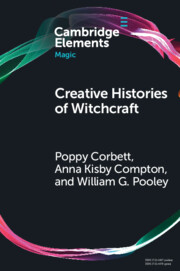Element contents
Creative Histories of Witchcraft
Published online by Cambridge University Press: 26 May 2022
Summary
- Type
- Element
- Information
- Series: Elements in MagicOnline ISBN: 9781009221054Publisher: Cambridge University PressPrint publication: 23 June 2022
References
- 10
- Cited by

